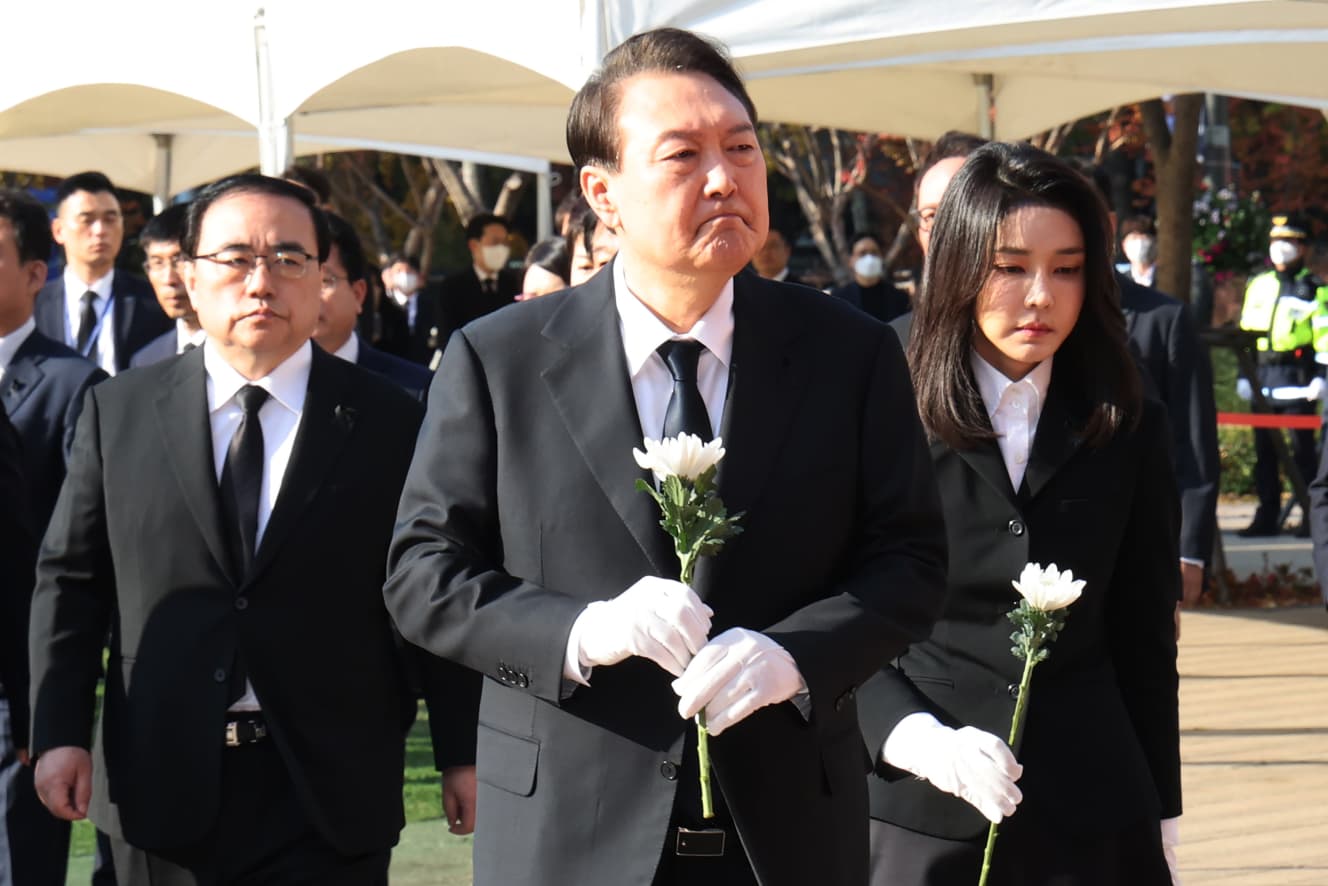Blame Inadequate Security for South Korea Crowd Crush Resulting in 159 Deaths
Police Official Sentenced to Prison
On February 14, the Western District Court of Seoul made a critical decision in the wake of the unprecedented tragedy that killed 159 people in Itaewon, a downtown area of Seoul, South Korea, on Halloween, October 29, 2010. The court sentenced Mr. A, then head of the Seoul Metropolitan Police Department, to one year and six months in prison.
Immediately after the accident, Mr. A allegedly ordered the deletion of an internal document that pointed out the crowding of people caused by Halloween. The court condemned Mr. A’s actions, saying. ‘Despite the unprecedented loss of life, he betrayed the public’s expectations. It seems that he tried to evade his responsibility as a police officer and cover up the facts. This is the first time that a senior police official has been sentenced for the Itaewon avalanche accident.
FRIDAY Digital” reported in detail on the major accident in Korean history in an article distributed on November 1, ’22. We would like to recount the background to the trouble, including the extremely inadequate fountainhead security (some corrections have been made).
The plane was so overcrowded that the body floated.
Don’t push! Get back!
You’re crushing people!”
The joyful atmosphere of Halloween that had enveloped the downtown area was suddenly enveloped by the fear of death.
The catastrophe occurred in Itaewon, a popular spot for young people in Seoul, Korea, just after 10 p.m. on October 29, 2010. Crowds poured into a narrow street 3.2 meters wide and 40 meters long near the subway station. The people who were stuck in the street fell to the ground, and 159 people, including two Japanese, lost their lives.
The site seemed to be so overcrowded (more than 10 people to a square meter) that bodies floated to the surface. Moreover, it was a slope with a 10% incline and many steps, which made it easy for people to fall down. Despite the dangerous conditions, crowds poured into the street, one after the other. It is believed that people fell down as if a wave was crashing down, and then people were covered from above, crushing many people to death.

President Yun Suk-yeol moved quickly. In the early hours of October 30, he entered the Crisis Management Center of the Presidential Office and stated that “a tragedy and a disaster that should never have happened has become a reality,” and that he would give top priority to the situation.
However, it seems that behind this stance was the calculation that “we don’t want to repeat the past administrations.
The Sewol disaster that occurred in April 2002 left more than 300 people dead or missing. The accident caused chaos at the scene, as then President Park Geun-hye was out of communication for about seven hours after the disaster. The delay in the initial response caused the damage, and the incident was heavily criticized. According to one theory, she was secretly meeting with a man close to her. The Sewol incident contributed to the resignation of the Park administration.

The accident could also be fatal for President Yun. Due to the new coronavirus, Halloween events had been in a mood of self-restraint since ’20, but in ’22, business restrictions were eased for the first time in three years. According to KBS TV, only 137 police officers were deployed despite the 130,000 people who visited Itaewon that day.
According to KBS TV, only 137 police officers were deployed despite the fact that 130,000 people visited Itaewon on the day of the festival. There were two reasons why security was so inadequate: first, there had been a number of anti-government demonstrations in the neighborhood over the past few days, and second, there were too many people assigned to respond to the demonstrations. It seems that personnel were allocated to deal with the demonstrations.
The second reason is the Presidential Office, which was relocated when President Yun took office in May 2010. The new presidential office is located near the accident site. North-South relations with North Korea have been strained in recent years. Both sides have planned a “beheading operation,” which implies the assassination of the other country’s top leader, so security has tended to be biased toward the presidential office. On top of that, I hear that the police officers were exhausted from working night shifts day after day.”
After the accident, the Yun administration increased the number of security guards from 137 to approximately 2,000, more than ten times as many as in the past, to handle the aftermath. However, this response seems to have provoked a public outcry.
If they could have mobilized 2,000 guards, why didn’t they have them do it from the beginning? The criticism is that the accident was a “man-made disaster” caused by neglecting security. The security arrangements before and after the accident are well symbolic of the Yun administration’s approval rating, which continues to hover at an extremely low level of around 30%. They concentrated security at the presidential office and put their own safety before the lives of the people. There is no reason for the public to trust them.
The responsibility of the police officials and President Yun is heavy.



Photo.: Reuters/Afro AP/Afro
